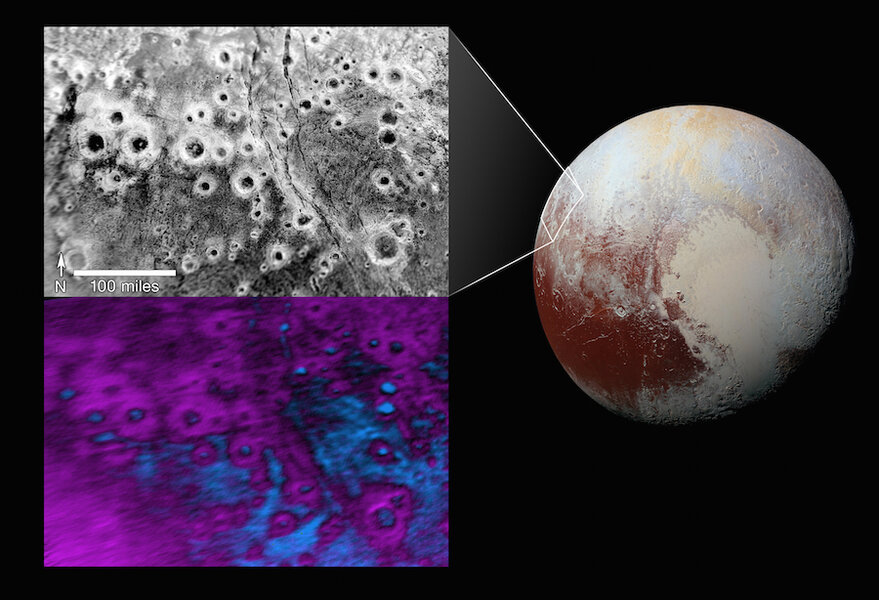Pluto has mysterious, icy 'halo' craters. How did they form?
Loading...
NASA’s New Horizons spacecraft may be more than 186 million miles away from Pluto, but it’s still transmitting images of the enigmatic icy world to the New Horizons team on Earth.
The latest featured images show a field of icy "halos" that shine in contrast to the rest of the dark surface of Pluto – scattered craters located in a region informally known as Vega Terra.
Methane ice lines the crater walls and surrounding ridges, creating halo-like forms.
The halos represent just the latest in the multitude of puzzles Pluto offers scientists.
“Exactly why the bright methane ice settles on these crater rims and walls is a mystery; also puzzling is why this same effect doesn’t occur broadly across Pluto,” said NASA in a press release.
The New Horizon team has posted a collage of halo images (visible above).
The black-and-white upper image shows several dozen halos, imaged by the New Horizons spacecraft during its Pluto flyby last summer. At the bottom right of the image is the largest halo crater spotted by the spacecraft, measuring almost 30 miles wide. All of the halos appear to glow in the image, a result of the bright ice resting on the dark surface.
The lower image, displaying a range of iridescent purple and blue, is from New Horizons’ Ralph/Linear Etalon Imaging Spectral Array (LEISA). Purple shows the distribution of methane ice, while the blue area between and within the craters represents shows the location of water ice.
Why the methane ice attached to the walls and ridges of the craters will remain a mystery for now. But scientists are familiar with the bright snow, having seen it before.
In March, images of snowcapped mountains were very visible against the backdrop of a relatively darker surface region of Pluto known as Cthulhu, which is made of methane tholins, The Christian Science Monitor reported. While the bright peaks brought rumors of “snow on Pluto,” the New Horizon team was quick to point out that snow on Pluto would be very different than the snow humans are used to.
Scientists with the New Horizons team said the bright snow on Pluto was predominantly methane that condensed into ice. On Earth, methane is found as a gas and is an attractive source of fuel, but on Pluto, the icy temperatures and atmosphere make it act differently.
There, “methane ice may act like water in Earth's atmosphere, condensing as frost at high altitude," said New Horizons science team member John Stansberry in March.
The methane ice snow in Cthulu appears similar to the ice found on the edges of the craters in the Vega Terra region, say scientists.
The most recent images of Pluto were captured from between 28,800 miles and 106,700 miles away from the surface by the New Horizons’ Long Range Reconnaissance Imager (LORRI) on July 14, 2015. The LEISA data arrived on the same day, captured from a high-resolution scan taken 28,000 miles from the surface.








